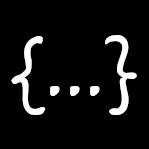Alright, buckle up—you’re about to dive into one of JavaScript’s most confusing but crucial concepts: prototypes, prototypical inheritance, and the prototype chain. I’m not here to bore you with academic bullshit; I’m here to break it down with real examples and show you why this shit matters, especially when you’re sitting in an interview or trying to debug some weird behavior in your code.
What the Hell Are Prototypes?
In JavaScript, every object has a prototype—an object it inherits properties and methods from. Think of it as a blueprint or a DNA blueprint that passes on characteristics. It’s like having a parent object that hands down traits to its children.
Simple Example: Object Prototype
const person = {
greet() {
console.log(`Hello, I'm ${this.name}`);
}
};
const john = Object.create(person);
john.name = 'John Doe';
john.greet(); // "Hello, I'm John Doe"Explanation:
personis our parent object with a methodgreet().johnis created usingObject.create(person), so it inheritsgreet()fromperson.- When we call
john.greet(), it findsgreet()in its prototype chain.
Prototypical Inheritance: The Goddamn Chain
Prototypical inheritance means that when you try to access a property on an object, JavaScript will first look for that property on the object itself. If it can’t find it, it’ll look up the prototype chain until it finds the property or reaches the end of the chain (i.e., null).
Example: Building a Prototype Chain
const animal = {
eats: true,
walk() {
console.log('Animal walks');
}
};
const dog = Object.create(animal);
dog.barks = true;
dog.walk = function() {
console.log('Dog walks happily');
};
const myDog = Object.create(dog);
myDog.name = 'Buddy';
console.log(myDog.eats); // true (from animal)
myDog.walk(); // "Dog walks happily" (overridden on dog)
console.log(myDog.barks); // true (from dog)Explanation:
myDogdoesn’t have its owneatsproperty, so it looks up the chain: first todog, then toanimal, where it findseats.myDog.walk()calls the method ondogbecause it was overridden there.- This is prototypical inheritance in action—a chain of prototypes where properties and methods are looked up sequentially.
Why the Fuck Should You Care?
Understanding prototypes is critical because:
- Performance & Memory:
Instead of creating a new copy of a function for every object, JavaScript uses prototypes so that all objects can share common methods. This saves memory and improves performance. - Debugging & Predictability:
Knowing how the prototype chain works helps you debug unexpected behavior. Ever wonder why a property isundefined? It might just not be on the object—it might be on its parent, or nowhere at all. - Interview Questions:
Expect interviewers to ask you about prototypical inheritance. They might ask:- “How does prototypical inheritance work in JavaScript?”
- “What’s the difference between
Object.create()and using a constructor function?” - “Can you explain the prototype chain?”
Practical Use Cases
Using Constructors and Prototypes
While ES6 classes make things look pretty, under the hood, they still use prototypes.
function Car(make, model) {
this.make = make;
this.model = model;
}
Car.prototype.honk = function() {
console.log('Beep beep!');
};
const myCar = new Car('Toyota', 'Corolla');
console.log(myCar.make); // "Toyota"
myCar.honk(); // "Beep beep!"Explanation:
Caris a constructor function.- The
honk()method is defined onCar.prototypeso all instances ofCarshare it. - This pattern is fundamental in JavaScript and comes up in many interview scenarios.
Using ES6 Classes (Syntactic Sugar)
ES6 classes provide a cleaner syntax, but remember, it’s just sugar over the prototype system.
class Person {
constructor(name) {
this.name = name;
}
greet() {
console.log(`Hi, I'm ${this.name}`);
}
}
const alice = new Person('Alice');
alice.greet(); // "Hi, I'm Alice"Explanation:
- The
greet()method is onPerson.prototype. - ES6 classes hide the prototypical inheritance, but the mechanism is the same.
Final Thoughts
Understanding prototypes, prototypical inheritance, and the prototype chain isn’t just academic bullshit—it’s essential for writing efficient, maintainable JavaScript code. It helps you understand:
- Why methods are shared across objects.
- How the prototype chain affects property lookup.
- Performance benefits and pitfalls.
Plus, it’s a common topic in interviews. Nail this shit, and you’ll have a strong edge over others.
Now, go out there and show those prototypes who’s boss. Keep pushing forward, you coding warriors! 💥🤘
Drop your thoughts or questions in the comments—let’s share our knowledge and kick some JavaScript ass together.
PS: If you are curious, you can read more about prototypes on MDN


Leave a Reply